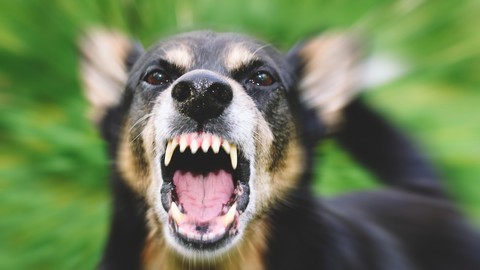Dog Aggression – Fighting & Biting
Last updated 10/2018
MP4 | Video: h264, 1280x720 | Audio: AAC, 44.1 KHz
Language: English | Size: 7.09 GB | Duration: 5h 28m
Last updated 10/2018
MP4 | Video: h264, 1280x720 | Audio: AAC, 44.1 KHz
Language: English | Size: 7.09 GB | Duration: 5h 28m
Easily Prevent, Objectively Assess & Quickly Resolve Dog Aggression Problems
What you'll learn
Prevent temperament and aggression problems from developing
Objectively assess the severity of dog aggression
Resolve the majority of dog aggression problems
Requirements
No knowledge or experience is required
Description
Obviously, prevention is the key to success — oodles of early socialization and handling with people and frequent off-leash walks, play and socialization with other dogs. With all cases of aggression (regardless of cause), the first step is to determine whether or not the dog is actually dangerous. Being reactive is not the issue; all animals “react”, humans included. The essential question is: Do they cause physical harm? Dog bite incidents are objectively assessed on a 1–6 scale based on wound pathology. Dog fights are assessed by calculating the Fight:Bite Ratio. Most dog bites and dog fights cause little, if any, damage and so, the prognosis is excellent for a hasty resolution via speedy classical conditioning techniques and basic lure/reward training for control and focus. With severe damage though, the dog is dangerous, the prognosis for resolution is extremely poor and so rehabilitation should not be undertaken cavalierly, if at all.
Overview
Section 1: Introduction
Lecture 1 Introduction
Lecture 2 Neonatal Handling
Lecture 3 Ethics
Lecture 4 Start with Puppies
Lecture 5 The Friendly Quotient
Lecture 6 Solve it Now
Lecture 7 Triage the Problem
Lecture 8 Make it Social
Lecture 9 The Fearful & The Bully
Lecture 10 Reverse the Meaning
Lecture 11 Cheating the Lure
Lecture 12 All Stress Isn't Bad
Anyone living with a dog that has aggression issues, either towards humans or other dogs



